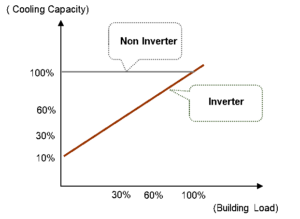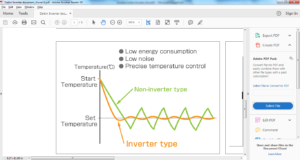Switching to inverter air conditioning units no longer involves replacing the existing ductwork, considering the systems come equipped with auto-ESP-adjust functions with DC motors to match the existing duct air flow and static pressure requirements, says Brij Sharma, Head of Engineering Sales, B2B HVAC Engineering Team, LG Electronics Middle East & Africa
As more properties get handed over each year, the pressure on property owners and management companies to keep high occupancy and, thus, profitability, is immense. In this increasingly competitive property market, the race to keep ahead of this curve is becoming challenging.
Property owners are looking for replacement and, sometimes, retrofit, of old AC units, primarily due to:
Whatever may be the reason, replacing or retrofitting an existing AC system presents opportunity to upgrade them to better technology products that are more efficient, and have better control on indoor conditions.
Energy efficiency
One of the second-most important factors while deciding which property to rent, after the rent amount itself, is the cost of energy – primarily the AC bills. For properties that use an old DX split system, the cost of energy to keep the air conditioning system running is particularly high. The reasons for that are mainly as follows:
The main drawback of old technology air conditioning systems has been the use of ON/OFF-type compressor design. This requires the compressor to run at full capacity, even though it is well established that air conditioning systems need to run at full capacity only five per cent of total run time.
Inverter ACs, decidedly
Inverter design of compressors, coupled with electronic monitoring of refrigerant flow, enables the system to run at exactly the same capacity as the room load demands at that time. Effectively, the AC will be running on part-load capacity 95% of run time. This ability to run the compressor on part-load leads to over 30% drop in electricity consumption.

Better indoor conditions:
Another drawback of ON/OFF-type compressor design is the continuous switching on and off cycle of the compressor. This leads to high humidity or high temperature swings in occupied space, both of which are undesirable.
Inverter AC units not only delivery exact capacity to the occupied space at all times, but they also have built-in intelligent logic to monitor indoor conditions and provide precise temperature control – and, thus, tighter control on humidity. No temperature swings exist due to this mechanism, and the end-user experience is much more comfortable.
Lower retrofit downtime and costs
Retrofit downtime has a lot of bearing on how decision-makers plan these retrofits. Often, the costs associated with retrofitting ACs spiral upwards drastically when associated ductwork needs replacement.

Inverter AC units come equipped with auto-ESP-adjust functions with DC motors to match the existing duct air flow and static pressure requirements. This prevents the need to retrofit entire ductwork and, thus, false ceiling, greatly reducing the retrofit budget requirements. These systems can use existing refrigerant pipe network, as well, thus impacting the retrofit down time.
Conclusion
Inverter technology ACs constitute the way forward for retrofit and replacement markets. Upcoming regulations are also expected to encourage decision-makers to use higher energy-efficiency devices. The decision-makers should self-evaluate the benefits versus cost aspect of upgrading to inverter-based AC systems and take conscious decision to enhance the end user experience and contribute to the environment at the same time.
The writer may be reached at: brij1.sharma@lge.com
Copyright © 2006-2025 - CPI Industry. All rights reserved.